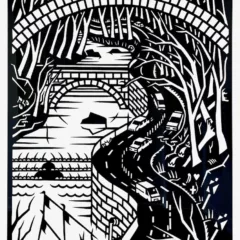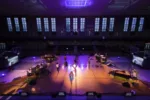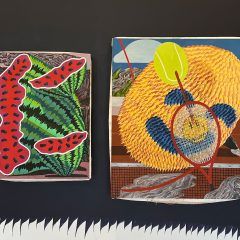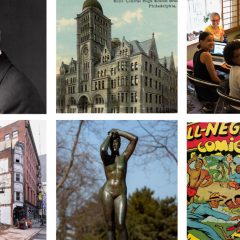By Daniel Hoffman
Desert Island, the exhibition at Space 1026, is full of artists who have played a role in Desert Island, the Brooklyn comics store owned by Gabe Fowler. The exhibition, curated by Fowler and up through the end of the month, gives us a little glimpse into the lives of these prolific artists. Art seems to permeate their lives and manifests itself in multiple expressions. Pieces on the wall serve as finished ideas, while zines act as receptacles for the numerous thoughts and ideas of the individual artists.
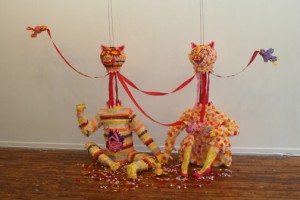
There is an absurdist lean to a lot of the work. Lisa Hanawalt’s sculpture “Cats” depicts two anthropomorphic cats sitting, holding hands and smiling while their heads are ripped off and their entrails pulled out by two birds. While the subject is gruesome, the execution is quite playful. The piece is made of streamer paper and looks like a massive piñata. By exaggerating the violence to an outrageous level, Hanawalt speaks about the violent nature of a child’s game.
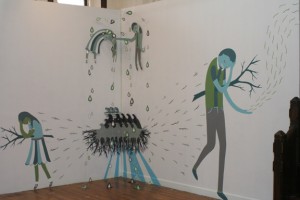
Similarly, Ali Aschman’s work deals with themes of violence and absurdity. The mixed media mural “Installation” depicts people impaling each other with rod-like arms and tree branches while holding skulls in their other hands. Their sad expressions look as though the death in the work is inevitable and all players are victims of their fate. The illustrative nature of it feels playful despite its subject matter. It is at once beautiful and heavy-handed, which is one of the things that makes comic books so appealing.
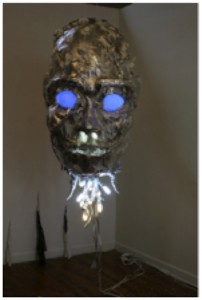
James Moor’s “Sculpture” balances Aschman’s work with a completely different aesthetic. Moore’s work feels rough and impromptu, while Aschman’s is precise and planned out. Moore’s massive, floating metal head with glowing blue eyes, glass mucus and a mass of light bulbs — the severed spinal cord — dangling from the neck is hilarious and grotesque.
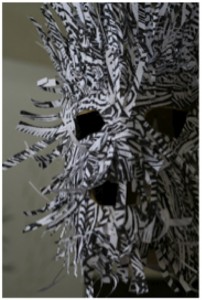
“Masks,” by John Mejias, strikes an equally dark tone. The masks are disembodied and suspended at odd heights in a cluster. We find out that they are relics of performances by the artist and his band. This notion of their former life as objects of performance makes them feel all the more ghostlike as they hover in the space. They are quite beautifully constructed of cut paper with printed patterns.
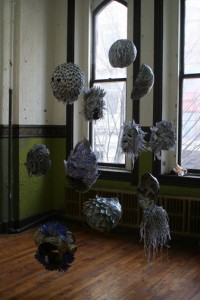
In addition to being in a band, Mejias is a teacher. He uses his experiences as a teacher as material for his zines, of which there are many. I cannot help but think of British education guru Ken Robinson who says that schools are gradually teaching students from the neck up and then slightly to one side. After experiencing the numerous facets through which these artists create and express, it makes me happy that Mejias is a teacher. Hopefully his students will be as prolific as he and his fellow artists in this show are.


